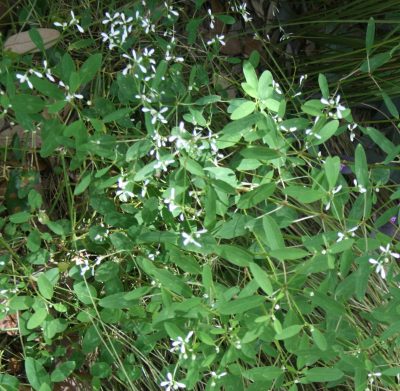What is this growth on Texas persimmon?
Thanks to Kim Johnson for this question about her Texas persimmons! Last fall, blisters appeared on the leaves of her young persimmon tree. She’s tried spraying with water and insecticidal soap, but the blisters remain, and now some of the new growth has them. What is it and what can she do about it?
Well, Kim, these are persimmon leaf galls, which are caused by a mite, which lays its eggs on the leaves, causing the plant to react by producing those blister-like cysts on the surface. Since the leaf tissue surrounds and protects the young mites, spraying with any sort of product won’t have any effect, so there’s no need to waste your time or money.
While the mites definitely aren’t the best thing for the plant’s healthy growth and development, they usually aren’t more than a nuisance and the plant recovers. Because your tree is so young, with so few leaves, it’s a bit more of a problem, simply because the plant doesn’t have as many leaves to compensate for the issue.
But ultimately, as the tree gets larger, the problem will be less of an issue. Most times mites and other gall-making insects are cyclical problems, often with many years of non-infection between problem years.
Texas persimmons are tough, and my bet is that your tree will overcome this setback. Treat the plant the way you would if it were completely healthy, and the problem should right itself within a few seasons; hopefully sooner!

